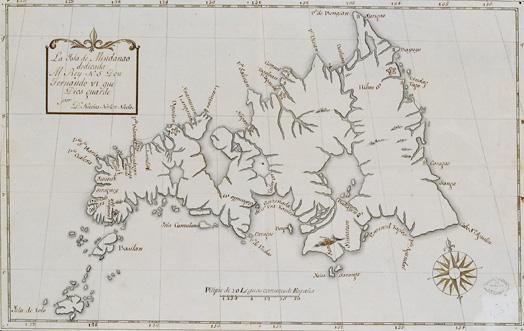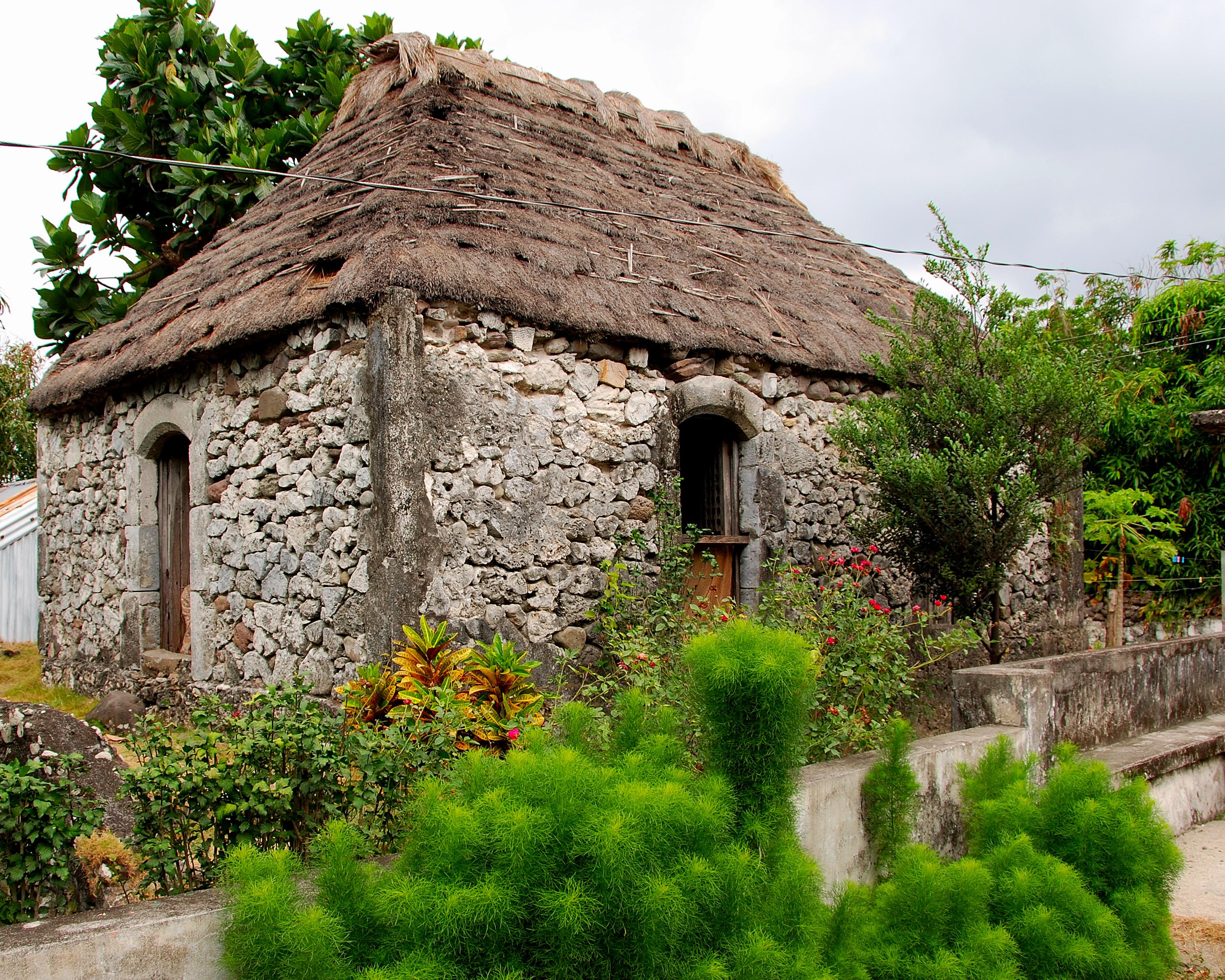|
Camiguin
Camiguin, officially the Province of Camiguin (; ; Kamigin: ''Probinsya ta Kamigin''), is an island province in the Philippines located in the Bohol Sea, about off the northern coast of mainland Mindanao. It is geographically part of Region X, the Northern Mindanao Region of the country and formerly a part of Misamis Oriental province. Camiguin is the second-smallest province in the country in both population and land area after Batanes. The provincial capital is Mambajao, which is also the province's largest municipality in both area and population. The province is famous for its sweet lanzones, to which its annual Lanzones Festival is dedicated and celebrated every third weekend of October. It is home to lush interior forest reserves, collectively known as the Mount Hibok-Hibok Protected Landscape, which has been declared by all Southeast Asian nations as an ASEAN Heritage Park. The province also boasts three National Cultural Treasures, namely, the Old Bonbon Church ru ... [...More Info...] [...Related Items...] OR: [Wikipedia] [Google] [Baidu] |
Mambajao, Camiguin
Mambajao, officially the Municipality of Mambajao, is a municipality of the Philippines, municipality and capital of the Philippine Province, province of Camiguin, Philippines. According to the 2020 census, it has a population of 41,094 people making it the most populous town in the province. Etymology Mambajao is from Visayan language, Visayan ''mambahaw'' (archaic form of ''mamahaw''), meaning "to eat breakfast"; from the root word ''bahaw'', "leftover rice from [last night]". History On January 4, 1855, Mambajao was separated from Catarman, Camiguin, Catarman, and by July 6 that year it was proclaimed as a town, with Fr. Valero Salvo as its first parish priest. On July 17, 1864, tremors were felt across the town, which were signs of an ongoing activity within an undersea volcano near Catarman. By May 1, 1871, the volcano erupted, decimating the town of Catarman, which lead to almost all of its inhabitants moving to Mambajao. In January 1872, Barrio Agojo was transferred from ... [...More Info...] [...Related Items...] OR: [Wikipedia] [Google] [Baidu] |
Camiguin Provincial Board
The Camiguin Provincial Board is the Sangguniang Panlalawigan (provincial legislature) of the Philippine province of Camiguin. The members are elected via plurality-at-large voting: the province is divided into two districts, each having three seats. A voter votes up to three names, with the top three candidates per district being elected. The vice governor is the ''ex officio'' presiding officer, and only votes to break ties. The vice governor is elected via the plurality voting system province-wide. The districts used in appropriation of members are not coextensive with the legislative district of Camiguin; unlike congressional representation which is at-large, Camiguin is divided into two districts for representation in the Sangguniang Panlalawigan. Aside from the regular members, the board also includes the provincial federation presidents of the Liga ng mga Barangay (ABC, from its old name "Association of Barangay Captains"), the Sangguniang Kabataan (SK, youth councils) ... [...More Info...] [...Related Items...] OR: [Wikipedia] [Google] [Baidu] |
Northern Mindanao
Northern Mindanao (; Maranao language, Maranao: ''Pangotaraan Mindanao''; ) is an Regions of the Philippines, administrative region in the Philippines, designated as Region X. It comprises five Provinces of the Philippines, provinces: Bukidnon, Camiguin, Misamis Occidental, Misamis Oriental, and Lanao del Norte, as well as two ''Cities of the Philippines#Independent cities, highly urbanized cities'': Cagayan de Oro and Iligan, all occupying the northern-central part of Mindanao, including the island of Camiguin. The regional center and largest city is Cagayan de Oro. Etymology and history The current name of the region was derived from its position on Mindanao island. The term was officially coined by the Americans after the establishment of American Colonialism, colonial rule in the Philippines due to the defeat of Filipino revolutionaries. There have been proposals to rename the current Northern Mindanao region, which is dominated by the Cebuano ethnic group, into the ''Amihan ... [...More Info...] [...Related Items...] OR: [Wikipedia] [Google] [Baidu] |
Mindanao
Mindanao ( ) is the List of islands of the Philippines, second-largest island in the Philippines, after Luzon, and List of islands by population, seventh-most populous island in the world. Located in the southern region of the archipelago, the island is part of an island group of the same name that also includes its adjacent islands, notably the Sulu Archipelago. According to the 2020 census, Mindanao had a population of 26,252,442, while the entire island group had an estimated population of 27,021,036. Mindanao is divided into six administrative regions: the Zamboanga Peninsula, Northern Mindanao, the Caraga region, the Davao Region, Davao region, Soccsksargen, and the autonomous region of Bangsamoro. According to the 2020 census, Davao City is the most populous city on the island, with 1,776,949 people, followed by Zamboanga City (pop. 977,234), Cagayan de Oro (pop. 728,402), General Santos (pop. 697,315), Butuan (pop. 372,910), Iligan (pop. 363,115) and Cotabato City (pop. ... [...More Info...] [...Related Items...] OR: [Wikipedia] [Google] [Baidu] |
Lanzones
''Lansium domesticum'', commonly known as langsat () or lanzones, ,--) is a species of tree in the family Meliaceae with commercially cultivated edible fruits. The species is native to Southeast Asia, from peninsular Thailand and Malaysia to Indonesia and the Philippines. Description The tree is average sized, reaching in height and in diameter. 30 years old trees grown from seed and planted at 8 × 8 meter spacing can have a height of 10 meters and diameter of 25 cm. The trunk grows in an irregular manner, with its buttress roots showing above ground. The tree's bark is a greyish colour, with light and dark spots. Its resin is thick and milk coloured. The Pinnate, pinnately compound leaves occur in odd numbers, with thin hair, and 6 to 9 buds at intervals. The buds are long and elliptical, approximately by in size. The upper edge shines, and the leaves themselves have pointed bases and tips. The stems of the buds measure . The flowers are located in inflor ... [...More Info...] [...Related Items...] OR: [Wikipedia] [Google] [Baidu] |
Provinces Of The Philippines
In the Philippines, provinces ( or ) are one of its primary political and administrative divisions of the Philippines, administrative divisions. There are 82 provinces at present, which are further subdivided into Cities of the Philippines, component cities and Municipalities of the Philippines, municipalities. The local government units in the Metro Manila, National Capital Region, as well as Cities of the Philippines#Independent cities, independent cities, are independent of any provincial government. Each province is governed by an elected legislature called the Sangguniang Panlalawigan and an elected governor. The provinces are grouped into Regions of the Philippines, eighteen regions based on geographical, cultural, and ethnological characteristics. Thirteen of these regions are numerically designated from north to south, while the National Capital Region, the Cordillera Administrative Region, the Southwestern Tagalog Region (Mimaropa), the Negros Island Region, and the Ba ... [...More Info...] [...Related Items...] OR: [Wikipedia] [Google] [Baidu] |
Misamis Oriental
Misamis Oriental (; ; ), officially the Province of Misamis Oriental, is a Provinces of the Philippines, province located in the Regions of the Philippines, region of Northern Mindanao in the Philippines. The provincial capital, as well as its largest city, is Cagayan de Oro, though it is governed independently from the province. History Spanish colonial era Misamis Oriental shared a history with Misamis Occidental of being part of the Cebu, Province of Cebu during the Spanish colonial era. In 1818, Misamis was carved out from Cebu to become a separate province with Cagayan de Oro, Cagayan de Misamis ''(Cagayan de Oro)'' as its capital and was further subdivided into ''partidos'' or divisions: Partido de Cagayan (Division of Cagayan), Partido de Catarman (Division of Catarman), Partido de Dapitan (Division of Dapitan), and Partido de Misamis (Division of Misamis). The new Misamis province was part of the districts of Mindanao during the later part of the 19th Century, with its ... [...More Info...] [...Related Items...] OR: [Wikipedia] [Google] [Baidu] |
Bohol Sea
The Bohol Sea, also called the Mindanao Sea, is a sea located between the Visayas and Mindanao islands in the Philippines. It lies south of Bohol and Leyte and north of Mindanao. Siquijor and Camiguin are its two major islands. The major cities along the coastline of the sea are Cagayan de Oro, Iligan, Butuan, Dumaguete, Ozamiz and Tagbilaran. The sea connects to the Philippine Sea through the Surigao Strait, to the Camotes Sea both through the Canigao Channel and Cebu Strait, and to the Sulu Sea through the strait between Negros Island and Zamboanga Peninsula. Scuba diving The Bohol Sea is home to a large variety of premier scuba diving locations, dive charter boats, and hotels that cater to divers. Around the area of Tagbilaran and Balicasag Island there are numerous wall dives that range from . Water temperatures are very warm and most divers use a 3/2 short wetsuit to dive the location. Sea life is abundant and includes clownfish, lionfish, barra ... [...More Info...] [...Related Items...] OR: [Wikipedia] [Google] [Baidu] |
Kamigin Language
The Kamigin language, ''Kinamigin'' (Quinamiguin) is a Manobo language spoken on the island of Camiguin in the Philippines. It is declining as most inhabitants have shifted to Cebuano. Grammar ''Ethnologue'' lists the following grammatical features for Kinamiging. * VOS, VSO word order *prepositions *genitives after noun heads *articles, adjectives, and numerals before noun heads *relatives after noun heads *question word in sentence-initial position *word order distinguishes subjects, objects and indirect objects in some structures, word order distinguishes given and new information, topic and comment *affixes do not indicate case of noun phrases *verb affixes mark number * passives *causatives *comparative The degrees of comparison of adjectives and adverbs are the various forms taken by adjectives and adverbs when used to compare two entities (comparative degree), three or more entities (superlative degree), or when not comparing entities (positi ...s References ... [...More Info...] [...Related Items...] OR: [Wikipedia] [Google] [Baidu] |
Batanes
Batanes, officially the Province of Batanes (; Ilocano: ''Probinsia ti Batanes''; , ), is an archipelagic province in the Philippines, administratively part of the Cagayan Valley region. It is the northernmost province in the Philippines, and the smallest, both in population and land area. The capital is Basco, located on the island of Batan, and is also the most populous municipality in the province. The island group is located approximately north of the Luzon mainland and about south of Taiwan ( Pingtung County). Batanes is separated from the Babuyan Islands of Cagayan Province by the Balintang Channel, and from Taiwan by the Bashi Channel. Etymology The name ''Batanes'' is a Hispanicized plural form derived from the Ivatan endonym ''Batan''. History Early history The ancestors of today's Ivatans descended from Austronesians who migrated to the islands 4,000 years ago during the Neolithic period. They lived in fortified mountain areas called '' idjangs'' and ... [...More Info...] [...Related Items...] OR: [Wikipedia] [Google] [Baidu] |
Sangguniang Panlalawigan
Sangguniang Panlalawigan (abbreviated as SP; ), commonly known as the Provincial Board, are the legislatures in Provinces of the Philippines, Philippine provinces. They are the legislative branches of the provinces, and their powers and responsibilities are defined by the Local Government Code of 1991. Along with the List of provincial governors in the Philippines, provincial governor, the executive branch of the province, they form the province's government. Members are either called "board members" (BM) or "Sangguniang Panlalawigan members" (SPM). In Tagalog language, Tagalog-speaking provinces, they are informally called "bokal". History During the early period of History of the Philippines (1521–1898), Spanish colonization, newly conquered areas were designated as ''encomiendas'' which were headed by an ''encomendero'' chosen by the Spanish from among the ranks of the powerful local nobles. Encomiendas were organized only for the purposes of collecting tribute that went in p ... [...More Info...] [...Related Items...] OR: [Wikipedia] [Google] [Baidu] |



